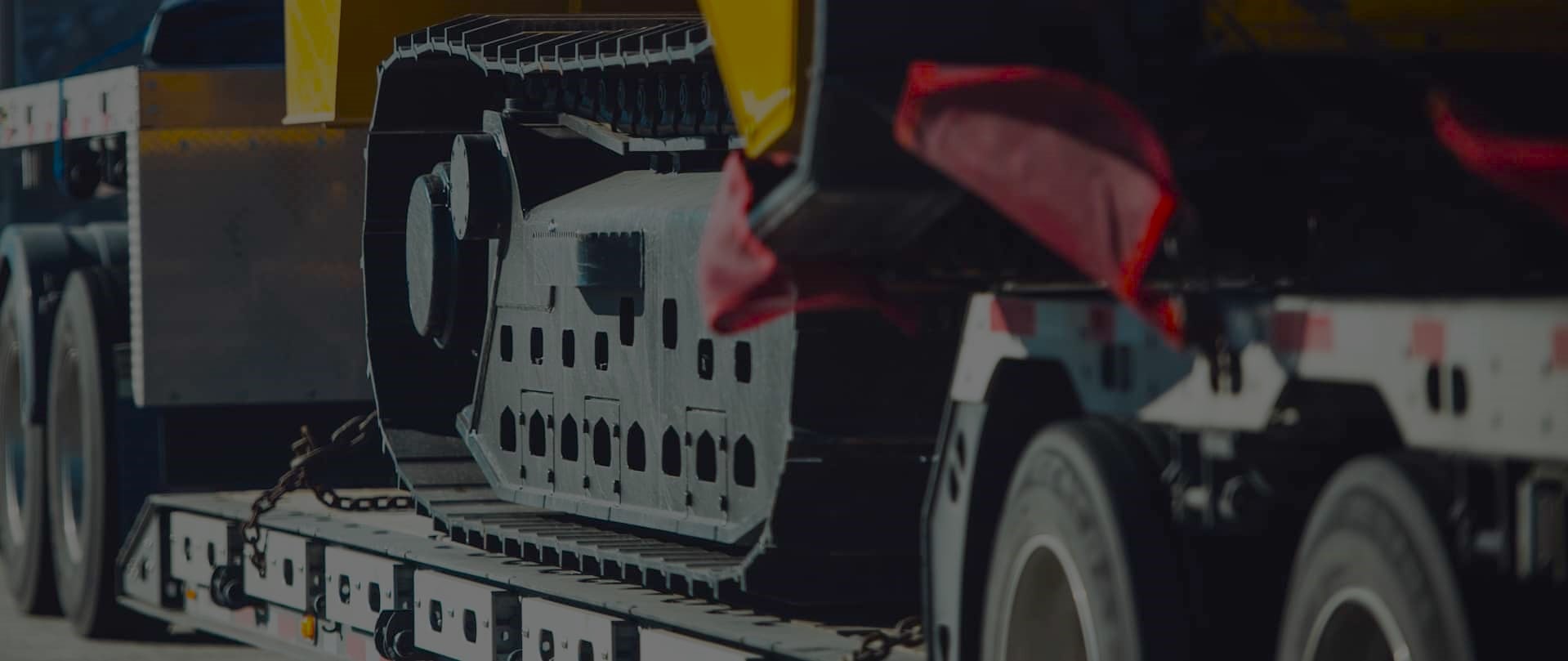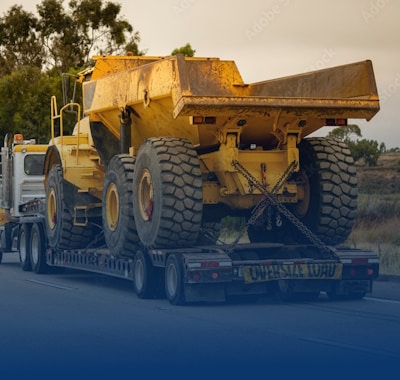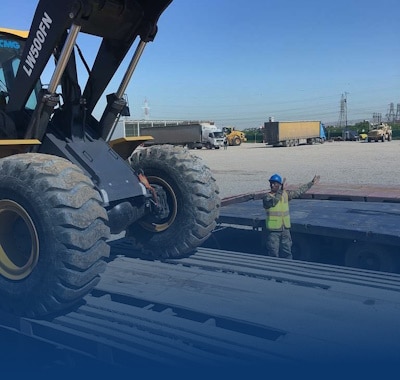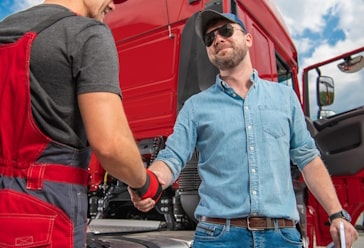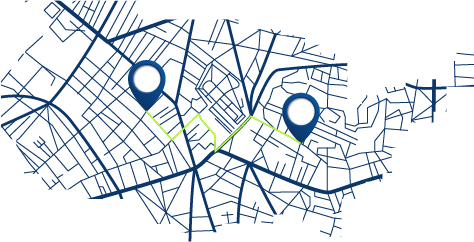What You Need to Know to Get a Superload Permit
Freedom Heavy Haul can offer expedited Pickup and Delivery for any size shipment anywhere in the USA. Contact us today for No Hassle, No Pressure Pricing.
Navigating the complex world of superload permits can be challenging for transportation companies and shippers. Understanding the basics is crucial to avoid costly delays and fines.
Securing a load permit is essential for the transportation of oversized and overweight loads across different states. The process involves understanding permit requirements, the application process, and route planning considerations.
This comprehensive guide will walk you through everything you need to know about oversize permits and the permitting process. By the end of this guide, you’ll be equipped with the necessary information to navigate the superload permit landscape effectively.
Understanding Superload Permits and Their Importance
Superload permits play a vital role in ensuring the safe and legal transportation of oversized loads. These permits are required for loads that exceed standard legal dimensions and weight limits established by state transportation departments.
What Defines a Superload in Transportation
A superload is defined as an oversized or overweight load that exceeds standard legal dimensions and weight limits. Typically, superloads exceed 16 feet in width, 16 feet in height, 125 feet in length, or weigh more than 150,000 pounds, though exact thresholds vary by state.
- Superloads require special permits due to their exceptional size and weight.
- The permitting process involves vetting routes for structural capacity, including bridges and overpasses.
Why Proper Permitting Is Critical for Legal Compliance
Proper permitting is not just a bureaucratic formality; it’s a critical legal requirement that ensures the safety of both the transport company and the general public. Operating without appropriate superload permits can result in substantial fines, impoundment of equipment, and even criminal charges.
The permitting process allows transportation departments to coordinate with utility companies, law enforcement, and other stakeholders to minimize disruptions and ensure safe passage. Compliance with permitting requirements also helps protect transportation companies from liability in case of accidents or infrastructure damage during transit.
When Your Load Requires a Superload Permit
Superload permits are required for loads that surpass specific size and weight thresholds, varying by state. Understanding these thresholds is crucial for compliance with regulations. The dimensions and weight of your load will determine whether you need a superload permit.
Size and Weight Thresholds That Trigger Permit Requirements
Most states have specific guidelines that dictate when a load is considered a superload. Generally, loads that exceed 16 feet in width, 16 feet in height, or 125-150 feet in length, or weigh over 150,000-200,000 pounds require special permitting procedures. These thresholds are not uniform across all states, so it’s essential to check the specific regulations for each state your route will traverse.
| Dimension | Threshold |
|---|---|
| Width | 16 feet |
| Height | 16 feet |
| Length | 125-150 feet |
| Weight | 150,000-200,000 pounds |
Non-Divisible Load Considerations
The nature of your load also plays a significant role in determining the need for a superload permit. If your cargo is considered non-divisible, meaning it cannot be broken down into smaller, legal-sized shipments without losing its value or functionality, you may need a superload permit. Examples include large industrial equipment, wind turbine components, and construction machinery. The load permit process will require detailed information about your vehicle’s specifications and the load’s dimensions.
Some states have specific weight thresholds based on axle configurations and spacing, which can affect the permitting process. Ensuring you have the correct permit is crucial for avoiding legal issues and ensuring safe transport on the highway.
Types of Permits for Oversized and Overweight Loads
To legally transport oversized and overweight loads, carriers must secure the appropriate permits, a process that can be intricate and nuanced. The type of permit required depends on several factors, including the load’s dimensions, weight, and the route it will take.
State-Level Permits: Requirements and Coverage
State-level permits are foundational for superload transportation, required for travel on state-maintained highways or interstates when dimensions or weight exceed legal limits. Each state has its own permitting system, application process, and fee structure, making multi-state routes particularly complex to coordinate.
For instance, a load traveling from California to New York would need to comply with the permitting requirements of multiple states along the route, each with its own set of regulations and fees.
County and Local Jurisdiction Permits
In addition to state permits, county and local jurisdiction permits are often required when the route includes county roads or city streets. This adds another layer to the permitting process, as local regulations can vary significantly.
For example, a load destined for a metropolitan area may require local permits to navigate through city streets, which can involve additional escort requirements or specific routing.
Annual vs. Single Trip Permits
Carriers have the option of obtaining either annual permits for frequent oversize loads or single-trip permits for one-time movements. Annual permits typically have more restrictive dimension and weight limits, while single-trip permits allow for case-by-case evaluation of routes and load characteristics.
For superloads, single-trip permits are more common as they accommodate the unique aspects of each load, such as oversized dimensions or extraordinary weight.
What It Takes to Get a Superload Permit: The Application Process
To successfully navigate the complexities of superload transportation, understanding the permit application process is crucial. This process is not only detailed but also requires precise information to ensure compliance with regulatory requirements.
Required Documentation and Information
The application for a superload permit necessitates the provision of comprehensive details about the load and the transport vehicle. This includes the load’s dimensions (height, width, length) and its loaded weight, as well as information about the tractor and trailer, such as the unit number, number of axles, year, make, license number, and VIN number.
Moreover, the planned route of the load is a critical piece of information. In some cases, a route survey may be required to assess the feasibility of the proposed route, especially if it involves traversing through sensitive or restricted areas. The states and counties through which the oversize load will travel must also be specified.
| Required Information | Description |
|---|---|
| Load Dimensions | Height, width, length |
| Loaded Weight | Total weight of the load |
| Tractor and Trailer Info | Unit number, number of axles, year, make, license number, VIN |
| Planned Route | Detailed route information, potentially including a route survey |
| Jurisdictions Traversed | States and counties the load will pass through |
Where and How to Submit Your Application
The submission process for a superload permit application can vary, with options including state Department of Transportation websites, third-party permit services, or in-person submissions for loads exceeding certain thresholds. Many states have adopted electronic submission systems to streamline the process, although superload permits often require additional review steps and may involve multiple departments for approval.
It’s advisable for transportation companies to work with specialized permit services that are well-versed in the nuances of each state’s requirements, thereby expediting the application process. Ensuring that the application is accurate and complete is crucial, as any discrepancies can lead to delays or rejection.
Essential Information Needed for Your Permit Application
The process of getting a superload permit involves submitting comprehensive details about your vehicle, load dimensions, and planned route. To ensure a smooth application process, it’s crucial to have all necessary information ready.
Vehicle and Equipment Specifications
Accurate vehicle specifications are vital for superload permit applications. This includes the make and model of the power unit, VIN number, license plate information, and registered weight. Additionally, detailed information about the trailer or specialized equipment being used is required, such as the number of axles, axle spacing, tire size, and overall dimensions of the vehicle combination. Ensuring that this information is precise will help avoid delays in the permitting process.
Load Dimensions and Weight Details
Load dimension details must be precise, specifying the exact height, width, length, and weight of the cargo. Permits are issued for exact measurements only, so there’s no room for estimation or rounding. Moreover, weight distribution across axles is particularly important for superloads, as many bridges and roadways have specific axle weight limitations that differ from gross weight restrictions.
Route Planning Information
Route planning information is another critical component of the permit application. This includes the exact starting point, destination, and preferred routing. While the final permitted route may be modified based on infrastructure limitations, providing a detailed initial route plan is essential. For complex loads, a survey of vertical clearances along the proposed route may be required, including bridges, overpasses, utility lines, and traffic signals.
By having all this information ready and understanding the requirements for superload permits, you can facilitate a smoother and more efficient permitting process. This not only saves time but also helps in avoiding potential issues that could arise from incomplete or inaccurate applications.
Route Planning for Superload Transportation
Superload transportation demands a comprehensive approach to route planning, taking into account a myriad of factors that can affect the journey from origin to destination. Effective route planning is not just about finding the shortest distance; it’s about ensuring the safe and legal transportation of oversized loads.
The process begins long before the permit application is submitted, often 4-6 weeks prior to the move, to identify potential obstacles and restrictions. This involves a detailed analysis of the load dimensions, weight, and the equipment required for transportation.
Identifying the Most Cost-Effective Routes
Finding the most cost-effective route for superload transportation involves considering several critical factors, including bridge weight restrictions, low clearances, construction zones, and varying permit fees across different jurisdictions. While the shortest route might seem like the most economical choice, it’s not always the case. Specialized routing software and services play a crucial role in identifying optimal paths that balance distance, safety, and compliance with regulations.
Professional route surveys are often necessary for superloads, involving a physical inspection of the entire route to identify potential hazards not visible on maps or in databases. This step is crucial in preventing delays or permit denials due to unforeseen restrictions.
Avoiding Restricted Roads and Structures
Avoiding restricted roads and structures is a key aspect of superload route planning. This often requires creative routing solutions, which might add mileage but ultimately save time and money. Many states maintain databases of structures with weight and height restrictions, but these aren’t always up-to-date. Therefore, local knowledge and recent route surveys are invaluable in navigating these challenges.
Route planning must also consider escort requirements, seasonal restrictions, and the potential need for coordination with utility companies for loads exceeding certain height thresholds. By carefully planning the route and considering all these factors, transporters can ensure a smooth and compliant journey for their superloads.
Understanding Permit Costs and Fee Structures
Navigating the complexities of superload permits requires a deep understanding of the associated costs and fee structures. The cost of oversized load permits is influenced by multiple factors, including the shipment’s dimensions, weight, and the route it takes to reach its destination.
State-by-State Fee Variations
The fee structures for superload permits vary significantly across different states. Some states charge a flat fee regardless of the load’s dimensions, while others calculate fees based on the weight, distance traveled, or a combination of these factors. For instance, Texas implements a base fee plus additional charges based on the number of counties the load traverses. In contrast, California uses complex formulas that consider axle weights and total miles traveled. Weight-based fee structures are common, with incremental increases as the gross weight of the load increases. Loads exceeding 200,000 pounds can face substantially higher permit fees compared to those just over the standard weight limits.
| State | Fee Structure | Additional Charges |
|---|---|---|
| Texas | Base fee + county charges | $100 per county |
| California | Axle weight + total miles | $0.50 per mile |
| Louisiana | Weight-based | $200 for bridge inspections |
Additional Costs: Escorts, Bonds, and Insurance
Beyond the basic permit fee, additional costs can significantly impact the total expense of transporting a superload. Escort vehicle requirements, for example, can range from $1.50 to $3.00 per mile per escort. For extremely large loads, police escorts may be required, adding $100 to $200 per hour to the transportation costs. Performance bonds or infrastructure protection bonds may also be necessary, sometimes reaching $1,000,000 or more for heavy loads traveling over sensitive infrastructure. Insurance requirements increase with the size and value of the load, with many states mandating certificates of insurance that name the state DOT as an additional insured party.
“The complexity of superload permit costs necessitates a thorough understanding of state regulations and additional fees to ensure compliance and accurate budgeting.”
As shown in the table above, the fee structures and additional charges can vary widely. It’s essential to research and understand the specific requirements for each state through which the superload will travel to accurately estimate the total cost.
Timeframes: How Long It Takes to Secure Your Permits
The time it takes to obtain a superload permit can vary significantly based on several factors. Understanding these factors is crucial for planning and executing the transportation of oversized loads.
Standard Processing Times
For smaller over-dimensional freight, the permitting process can be relatively quick. If the load is less than 53 feet long, 14 feet wide, 13 feet 6 inches high, and weighs less than 45,000 pounds, permits are typically processed and approved within four to eight hours. However, standard processing times for superload permits generally range from 7-21 business days, significantly longer than the 24-48 hours needed for standard oversize permits.
- Permits for loads exceeding 250,000 pounds or 18 feet in width may require 30 days or more for approval.
- Multi-state routes can compound timeframes, as each state processes applications independently.
Factors That Can Delay Permit Approval
Several factors can delay the permit approval process. These include incomplete applications, inaccurate vehicle or load specifications, and routes that require engineering analysis or bridge studies. Additionally, seasonal restrictions and holiday periods can also impact processing times.
- Bridge analysis can add 7-14 days to the permitting process.
- Seasonal restrictions, such as spring thaw weight limits, can extend processing times or result in temporary moratoriums.
- Establishing accounts with state DOTs in advance can help expedite the process for regular superload carriers.
By understanding these factors and planning accordingly, transportation companies can better navigate the permitting process and ensure timely approval for their superload permits.
Expert Tips for a Smooth Superload Permitting Process
The process of obtaining a superload permit can be daunting, but with the right guidance, it can be streamlined. To achieve this, it’s essential to start the permitting process early, ideally 4-6 weeks before the planned move date, allowing ample time for route surveys and multi-state coordination.
Ensuring precise measurements and weight calculations is also critical, as small discrepancies can result in fines or permit invalidation. Consider utilizing specialized permit services that have established relationships with state DOTs, as they can expedite applications and provide valuable insights.
Maintaining flexibility in scheduling and developing contingency plans for your route can also help mitigate potential issues. By following these expert tips and understanding the permitting process, you can ensure a smooth and successful transportation experience for your oversized and overweight loads.
